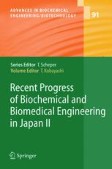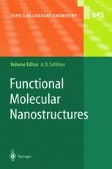Search
Search Results
-
Efficient Methods to Compute Long-Range Interactions for Soft Matter Systems
An extensive introduction to the topic of how to compute long-range interactions efficiently is presented. First, the traditional Ewald sum for 3D...
-
Bioprocess Monitoring Using Near-Infrared Spectroscopy
Near-infrared spectroscopy (NIR) is a nondestructive analytical technique that has been used for simultaneous prediction of the concentrations of...
-
Metabolic Flux Analysis Based on 13C-Labeling Experiments and Integration of the Information with Gene and Protein Expression Patterns
The recent progress on metabolic systems engineering was reviewed, in particular focusing on the metabolic flux analysis (MFA) based on the...
-
Transgenic Birds for the Production of Recombinant Proteins
Transgenic birds were expected to be an excellent transgenic bioreactor for the production of recombinant pharmaceutical proteins. However, the only...
-
Effects of acetylation on thermodynamic properties of seaweed alginate in sodium chloride solutions
Alginates are polysaccharides consisting of mannuronate and guluronate units. While bacterial alginate is acetylated, seaweed alginate does not...
-
Cyclopropanation with Ruthenium Catalysts
In this decade, a variety of ruthenium complexes have been intensively investigated that exhibit catalytic activity for cyclopropanation of olefins...
-
Ruthenium-Promoted Radical Processes Toward Fine Chemistry
Ruthenium holds a prominent position among the many transition metals used in radical chemistry. The dichlorotris(triphenylphosphine) complex...
-
Activation of Inert C–H Bonds
The development of catalytic reactions involving carbon–hydrogen bond cleavage is one of the most attractive research subjects in organic and...
-
Discrete Organic Nanotubes Based on a Combination of Covalent and Non-Covalent Approaches
Tubular organic nanostructures offering precise control over inner and outer surface functionality represent attractive building blocks for the...
-
Structural Aspects of Layered Double Hydroxides
Layered double hydroxides (LDHs) have been known for a considerable time and have been widely studied. The basic features of their structure,...
-
Microwave-Assisted Synthesis of Sulfur and Nitrogen-Containing Heterocycles
This chapter aims to review recent developments in the synthesis of sulfur and nitrogen-containing heteroaromatic compounds under conditions that...
-
Microwave-Assisted Synthesis and Functionalization of 2-Pyridones, 2-Quinolones and Other Ring-Fused 2-Pyridones
2-pyridones are important heterocycles with great applicability in medicinal chemistry and this core structure can be found in compounds with...
-
The Chemistry of 2-(1H)-Pyrazinones in Solution and on Solid Support
An overview on the microwave-enhanced synthesis and decoration of the 2(1H)-pyrazinone system is presented. Scaffold decoration using...
-
Computer Simulations of the Electric Double Layer
We describe the Lekner–Sperb summation technique used to calculate the Coulomb interaction in 2D periodic systems, and discuss in detail the methods...
-
Molecular Dynamics of Complex Systems: Non-Hamiltonian, Constrained, Quantum-Classical
A theoretically sound and computationally tractable treatment for non-Hamiltonian molecular dynamics is needed for simulations of complex systems....
-
Phase behavior of phytanyl-chained akylglycoside/water systems
The aqueous phase behavior of novel alkylglycosides, AGs, that have a 3,7,11,15-tetramethylhexadecyl (phytanyl) group as their hydrophobic part was...
-
About energy and electron transfer processes in C60 /phthalocyanine films
In the present work absorption, photoluminescence excitation and emission spectra of fullerene C60, and a zinc derivative of phthalocyanine (ZnPc) in...
-
Determining antioxidant distributions in model food emulsions: development of a new kinetic method based on the pseudophase model in micelles and opaque emulsions
The mechanisms of lipid peroxidation and the distributions of antioxidants in emulsions are not fully understood, in a large part because...
-
Improved colloidal stability by seeded emulsion copolymerization of styrene with acrylic acid
The incorporation of acrylic acid (AA) in styrene (S) latex particles was investigated to improve colloidal stability. AA was added at high S...
-
Study of the effect of porogen amount on formation of uniform polystyrene hollow particles prepared by SPG membrane emulsification technique
Uniform polystyrene (PSt) hollow particles were prepared by combining a Shirasu porous glass (SPG) emulsification technique and a subsequent...
